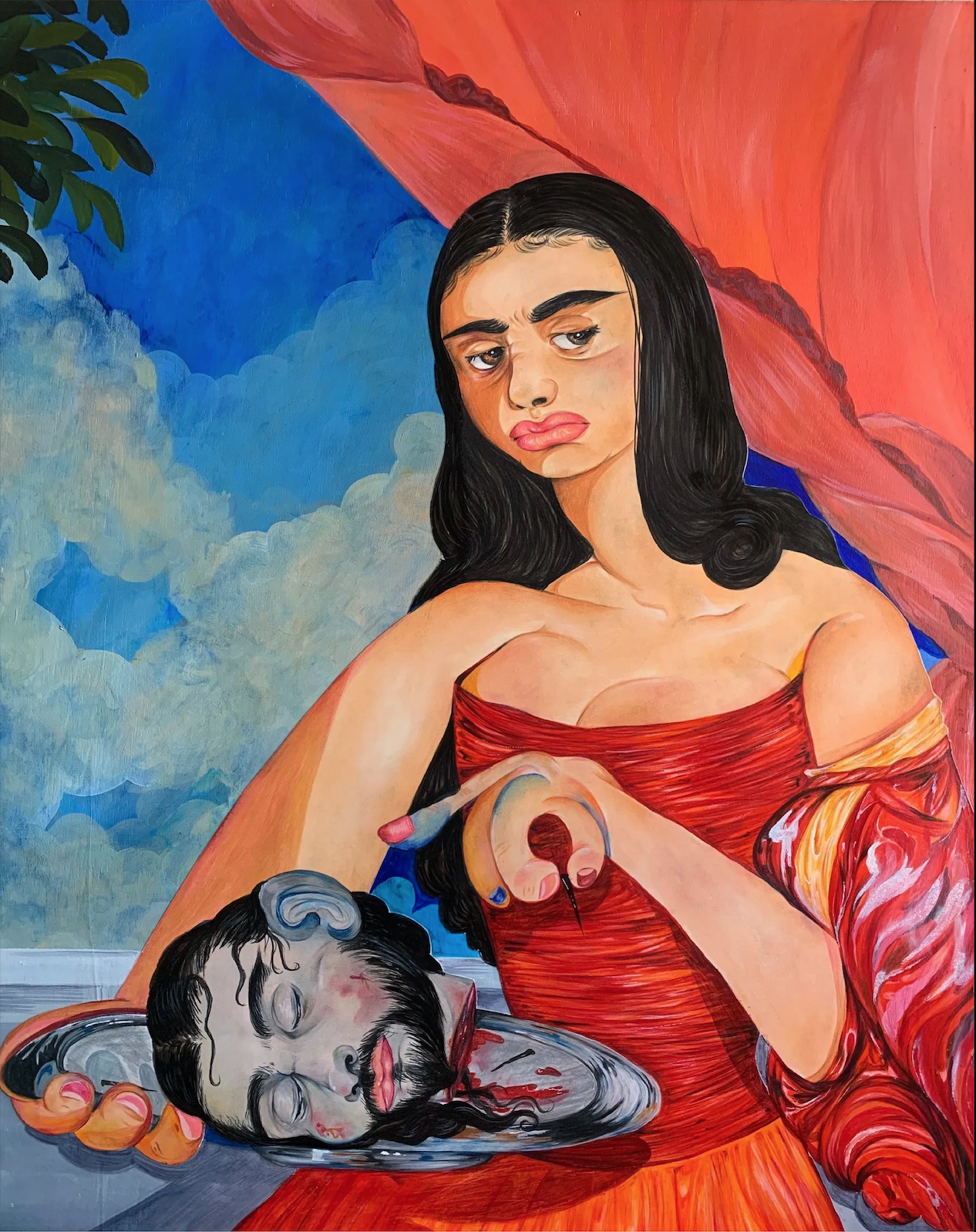
Bony Ramirez creates paintings with anatomically distorted subjects that reflect on social and political subjects. He incorporates a mix of Dominican motifs and Renaissance references. In our conversation, readers can get a point of view from a 24 year old artist, on what he’s achieved so far and what the future holds.
Talk to us about your latest online exhibition at Thierry Goldberg Gallery. You shared with me how in the middle of this crisis, all of your paintings sold. (Congratulations again!) How do you think this will change the way artists present their work?
I am very happy about the success of this exhibition! It was truly a blessing that people reacted so positively to my work! I genuinely hope things go back to normal after this crisis. Nothing beats being able to stand in front of a painting and seeing it in person, plus being able to interact with the artists and explain the work. Especially for me, my work has different layers and elements that can only be appreciated if seen in person. I hope the art world goes back to being how it was, at least in terms of experiencing the art.
You work with different mediums such as sculpture, painting, and digital media. Do you have a preferred medium?
Painting is definitely my preferred medium. It gives me a lot of freedom! As my paintings are mixed media, I have the freedom to experiment more. I do try to keep a balance between sculptures and paintings.
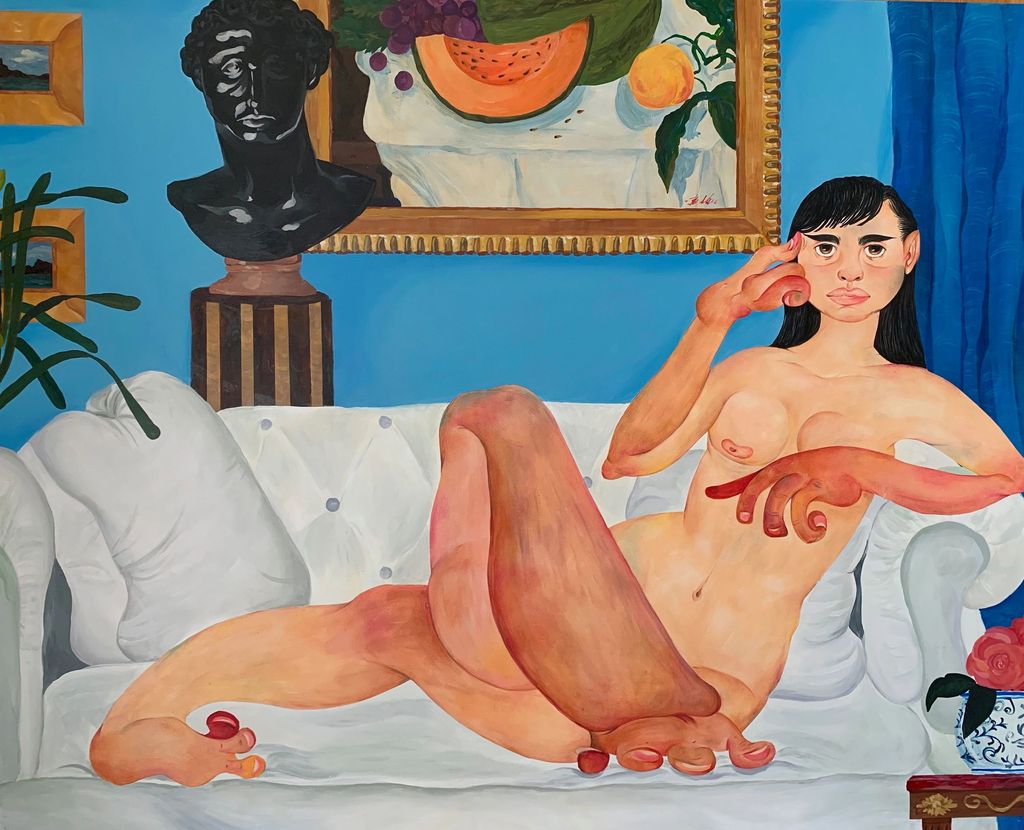
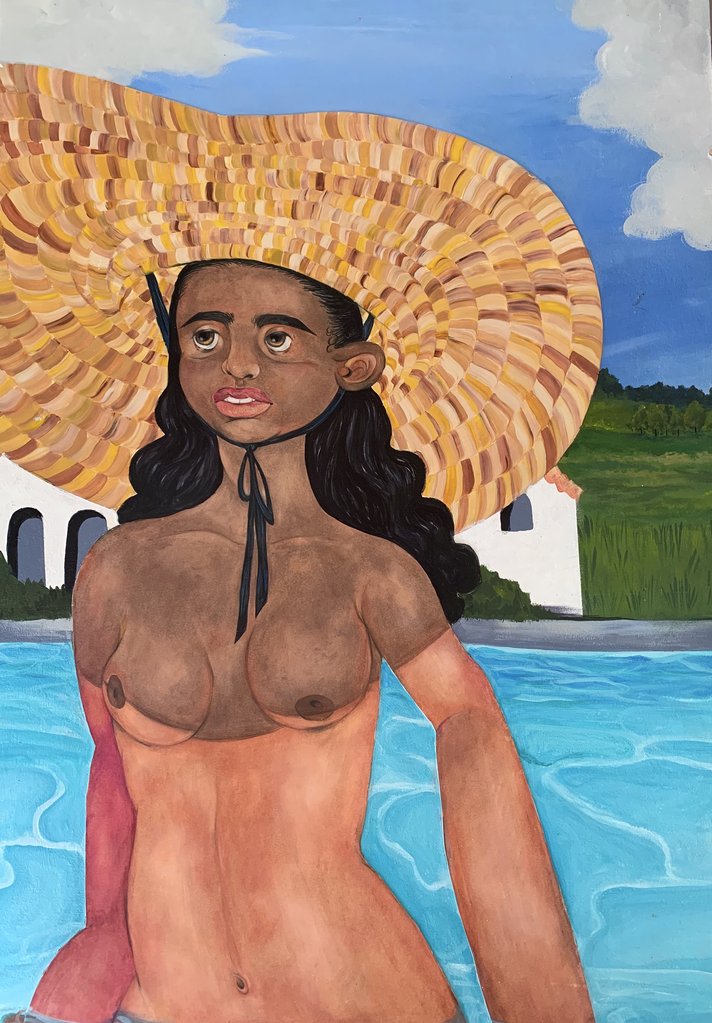
We see that you include references from the Renaissance and Italian Mannerists in your paintings. May you share more about combining this with Dominican references. How do you incorporate your Dominican and Caribbean heritage into your work?
Sometimes I describe my work as if the Renaissance period was started in the Caribbean. In terms of composition, I try to keep the strong and clean figures that Italian mannerists are famous for, but in my own way. I try to include motifs in my work that are automatically associated with Caribbean and Dominican culture. Plantains, plantain trees, and the ocean are some of those things. The same thing applies to my figures, usually making black/brown bodies that reflect the population of the Caribbean. Ultimately, mainly Dominican/Caribbean people notice the motifs and they feel represented, and that’s very important to me. My new body of work will have a bigger presence in my culture and I’m very excited for the future.
How has being at home impacted your future works?
So far, it’s been decent. My pieces are too big to just simply work on them on a table, so I use the kitchen countertop as my easel. The only limiting part is keeping everything clean. Trying not to get paint on the appliances or the kitchen in general. It’s definitely limiting, but so far I have to make it work!
How did you arrive at the style of distorted figures in your paintings? Have artists like Picasso and Francis Bacon influenced you? Has the style evolved since you started painting?
My early style was very child-oriented, at some point I wanted to be a children’s book illustrator. At the same time, I knew that I really wanted to push myself stylistically. I felt like I had not found my artistic voice. Later on is when I found out about Francis Bacon and Picasso, artists that push the human anatomy to the unimaginable! For a period of time I kept experimenting with the figures, drawing any type of proportion that came to my head.
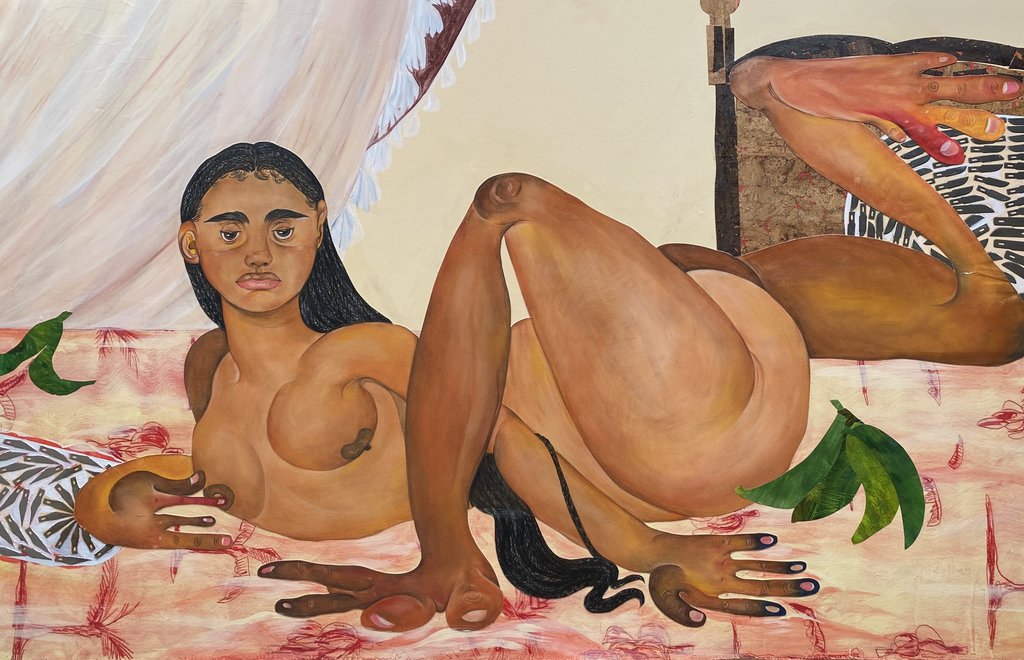

Recently, you have started to explore the Caribbean immigrant perspective on American culture. How do you conduct research and what is your process to start a new series?
Before I start a new series, I sit with the idea for a long time in my mind, until I think if it’s strong enough. I think, how can I expand it? How can I make it better? My previous body of work had a strong presence of religious iconography, so I did a lot of research about religious saints and stories. The more you learn about a subject, the more flexible and easier it becomes to represent. For this new body of work that I’m pursuing, I will focus a lot on Caribbean culture and the Caribbean immigrant perspective on American culture. I will explore things that I’ve experienced, so the research is already in me, but I still have to find new ways of portraying those experiences, and that’s where research kicks in again.
Some of your favorite photographers are Nick Knight and Carlota Guerrero. Do you see yourself exploring photography in the future?
I love looking at photographs, especially the ones with people. The postures, the form and the composition are all very inspiring. However, for my work I try to stay away from anatomical correctness. My figures are always from the top of my head, I never use photos as reference for the figures, only for the scenery and animals if included in the work. I don’t see myself ever trying photography any time soon, as my brain sees it as the complete opposite of my practice. I may venture to use photographs in my collages, but not actual photos, but who knows, the future is uncertain.
What contemporary artists do you admire and why?
I look up to artists that like me, explore the limits of human anatomy. Mainly figurative artists. Artists like UK-based Emma Finerman and Philadelphia artist Johnathan Lyndon Chase, that use strong brush strokes to create their figures. Tschabalala Self, that blends both pattern and texture in a genius way! I also admire artists that go beyond in their use of materials. A good example of this is Cuban-American artist Joseph Lazaro Rodriguez. He’s a multi-disciplinary artist that combines his sculptures and projections into multi-sensory installations.
In your website’s home page you state that you hate rulers. Do you feel that artists should work without rulers?
I believe artists should definitely work without boundaries. Artists should always try to challenge the norm in their own way. The statement is just a super technical way of telling myself to be free when creating.
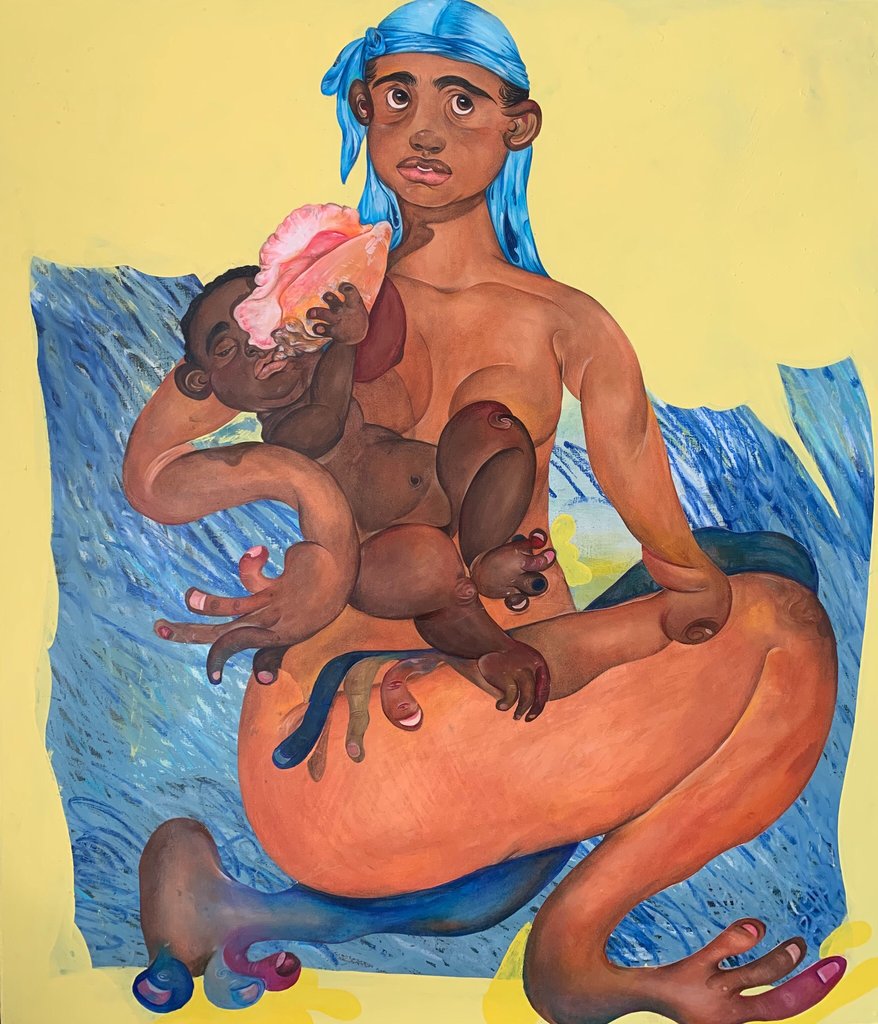
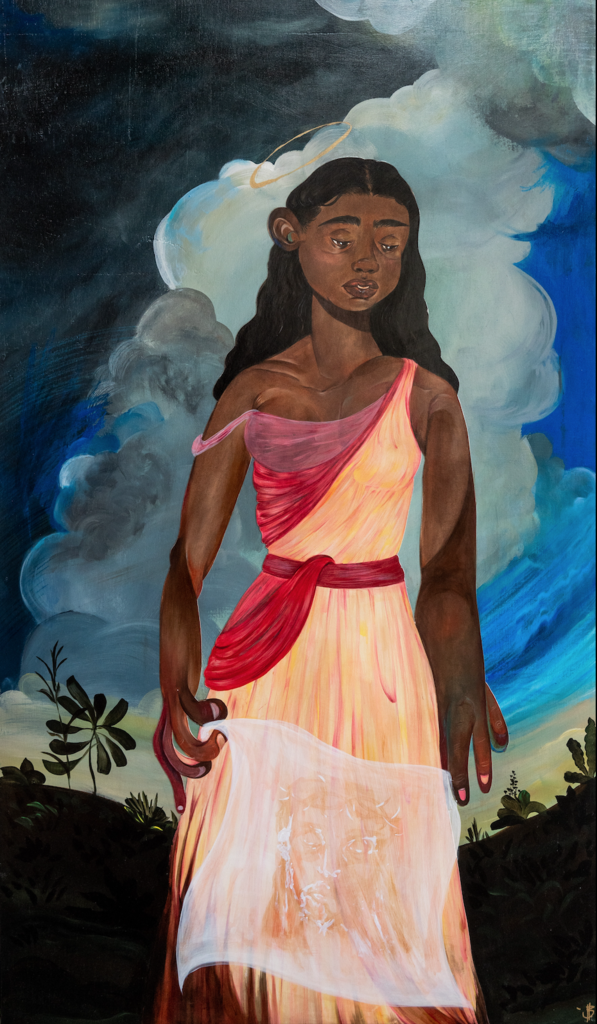
As a young artist, what advice can you give to other young artists about growing their presence on social media platforms?
The first thing is to trust yourself, to believe that your work is great! Make sure to have a style or something in your work that identifies you, so when your work is shared around the web, people know where to find you. Also, be as active as possible, but with quality work. Always quality over quantity. You can entertain your followers daily, with “Stories”, and save the actual posts for pieces or events that are important to you. It’s a long road, but if you believe in yourself, the universe will believe in you too!
